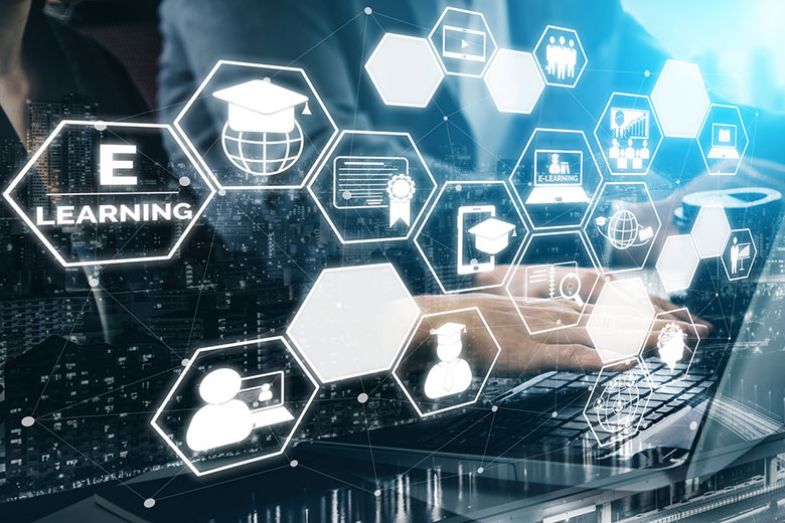• Developing more intelligent education through digital transformation
• The future of education is here and its more personalized and hybrid
• How technology can help universities deliver more immersive education
• Digital transformation can help level the educational playing field, here’s how
It was just another day in class for students at one of the most lauded universities in the world. As each of them logged into their virtual classrooms, there was a teaching assistant who updated them about the lecture schedule for the day, assignments to be submitted and even barred a student from attending a class because he was three seconds late.
It wasn’t until the end of the term that the students actually learnt that this teaching assistant wasn’t a real person but an application designed in a manner to help reduce the burden on professors. This might sound like a scene straight out of a movie set in 2050, but reality is that technology has made such deep in-roads into education that instances like these are now more common.
Education is moving away from traditional rows of students looking at the same textbook while a teacher lectures from the front of the room. Today’s classrooms are not simply evolving to use more technology and digital resources; they are also investing in machine learning.
Agile decision making, often touted in the world of product-innovation has arrived to revolutionise the service-industry of education. According to a report on Global Education Technology Market, global education technology market will witness a compound annual growth rate of 19.9% over the next seven years to be remunerated at USD 318.8 billion by the year 2027.
India is poised for exponential growth with the highest adoption rate of technology among the youth and an exponential rise in the number of smartphone users. While students stand to gain from the opportunities provided by (Big) Data Analytics, teachers, on the other hand, also benefit from using data wisely to enable them to make smarter decisions earlier in the learning progression.
Support teachers to deliver better
Due to the advancement in data analytics and technology, teachers can be empowered to do much more than what they do now to access the students and make the best use of their opportunity as educators. By deploying cloud computing solutions, teachers have access to all their student’s data in one place.
In our experience of working in the field of higher education, we have observed that cloud computing offers opportunities for innovation and benefits in the classroom that are both safe and cost-effective. Teachers can connect their students to multiple programs and applications, allowing for students to be innovative in their presentation of mastery of standards.
The 21st-century classroom needs more flexibility in terms of design and layout. Teachers can also harness new and innovative classroom structures through cloud computing. Innovative classroom formats such as blended or flipped classrooms are streamlined through the cloud.
Machine learning is opening up new possibilities for educators and learners. In addition to carrying some of the administrative weight, it also helps teachers improve their lessons by identifying where clusters of students are struggling. A recent research by McKinsey suggested that technology can potentially save teachers about or 13 hours a week to redirect toward activities that lead to better student outcomes.
Enhance learning for students
Let’s consider a simple example to illustrate how smart technology solutions can benefit students: Students are often bombarded with information in a classroom which they must quickly attempt to process and make sense of. However, this can leave them feeling overwhelmed and confused by concepts. Technology provides students with access to countless online resources, encouraging them to carry out research and, therefore, become more independent.
Artificial intelligence is one of the fastest-growing technologies in the global education market. Market research firm, HolonIQ, expects AI adoption in education to reach a global expenditure of $6 billion by 2025. Machine learning can also grade students fairly by removing human biases.
Through identifying weaknesses, machine learning can organize content more effectively. And once weak spots are identified, students receive suggestions regarding materials and further learning methodology.
Improve standard of learning
A vast part of school functioning depends on meticulous administration and planning, from keeping a seamless correspondence with parents of every student, to planning syllabus for terms. Tech enabled platforms, customised for schools and other educational institutions, helps create an automated information management and sharing system.
This helps reduce the manual burden upon teachers and administrative staff. It has already shown to improve productivity and overall performance of teachers, while also creating a seamless system of administration.
Educators are always striving to personalize learning for students.
Technology can help them reach new levels with access to real-time student data, longitudinal information, content, apps, and more. Technology can help educators create blended learning environments and leverage digital tools for formative and summative assessments, bringing new models for learning and teaching to classrooms.
Artificial intelligence has the potential of organizing the content and curriculum in a better way, as it can analyze what works best and which concepts are understood better with certain techniques. Machine learning, such as learning analytics, will also help improve retention rates. By identifying “at risk” students, schools can reach out to those students and get them the help they need to be successful.
While experts believe that the human psychology behind learning has not changed drastically over time, the external factors affecting how we comprehend, retain and receive new material are constantly evolving. As the digital revolution accelerates, technology gives us exciting opportunities to shape learning experiences and achieve learning goals.
Education is gradually moving away from traditional “one size fits all” classroom practices. Today, the use of AI and big data promises to bring new levels of personalization and support to teaching, learning, and research. It is high time for the education industry to embrace machine learning, and doing so can give institutions a competitive edge. But more importantly, it will provide them with the ability to truly make a difference to a whole generation of students.

Prasad Washikar
Fulcrum Digital, Senior VP-Digital Practices





